How Industrial OEMs Can Transform Maintenance Services into Profit Centers
Why maintenance services remain an untapped goldmine for industrial OEMs
Let’s face it—selling industrial machinery is a bit like dating. The initial sale is exciting, but the real relationship begins afterward. For many Original Equipment Manufacturers (OEMs), maintenance services have traditionally been viewed as a necessary post-sale obligation rather than a strategic revenue opportunity. It’s like owning a gold mine but only mining the surface!
The numbers don’t lie. According to industry research, after-sales services typically generate profit margins 2-10 times higher than original equipment sales. Yet remarkably, many industrial OEMs continue to treat maintenance as a cost center rather than the profit powerhouse it could be. While you’re busy chasing the next big machine sale, there’s recurring revenue quietly waiting in your installed base.
This oversight creates a significant competitive advantage for those companies willing to shift their perspective. The beauty of maintenance service monetization isn’t just in its profitability—it’s in its stability. While new equipment sales often fluctuate with market conditions, properly structured maintenance services provide predictable, recession-resistant revenue streams that can substantially increase your company’s overall valuation.
What exactly makes a maintenance service profitable? (It’s not what you think)
If you’re thinking the secret to profitable maintenance services is simply charging more for parts and labor, I’m afraid you’ve missed the plot entirely. The most successful industrial OEMs understand that profitability in maintenance isn’t about maximizing each service incident—it’s about transforming the entire service relationship.
Contrary to popular belief, the highest-margin maintenance services aren’t emergency repairs (though those certainly command premium rates). The real profit drivers are structured service programs that shift from reactive to proactive maintenance. When you can prevent problems before they occur, you’re not just saving your customers money—you’re positioning yourself to capture more value from the relationship. Think of it as the difference between being a firefighter who shows up when there’s a crisis versus being the trusted advisor who ensures fires never start in the first place.
Another misconception is that service profits come primarily from spare parts markup. While parts certainly contribute to the bottom line, the true value lies in the data-driven insights you can provide. When you help clients optimize their operations through predictive maintenance and performance analytics, you create value that transcends the cost of components. This is where digital tools like Fter.io become game-changers, enabling you to monitor machines remotely, analyze performance patterns, and deliver insights that customers will gladly pay premium prices for.
4 proven strategies to transform your maintenance offerings into revenue generators
Ready to turn your maintenance department from a cost sink into a profit swimming pool? Here are four battle-tested strategies that industrial OEMs are using to monetize their maintenance services effectively:
1. Tiered Service Packages: One size definitely doesn’t fit all when it comes to maintenance services. Create multiple service tiers—from basic break/fix coverage to comprehensive “we handle everything” plans. This allows customers to choose their preferred level of support while giving you clearly defined upsell pathways. The beauty of tiered offerings is that they make premium services seem more attainable when positioned alongside basic options. Like coffee shops offering small, medium, and large—guess which size most people choose? Not the small!
2. Outcome-Based Service Contracts: Rather than selling hours of service time, sell guaranteed outcomes like uptime percentages or production capacity. This approach aligns your incentives perfectly with your customers’—they pay for results, not activities. When implemented correctly, outcome-based contracts often command 20-30% higher prices while actually reducing your service delivery costs through more efficient preventive maintenance. It’s the maintenance equivalent of “having your cake and eating it too.”
3. Consumables and Supplies as a Service: Beyond traditional maintenance, consider offering automated replenishment of consumables, components, and supplies used by your equipment. By leveraging platforms like Fter.io, you can track usage patterns and automatically trigger reorders, eliminating the hassle for customers while creating a steady revenue stream for your business. This approach transforms occasional parts sales into predictable subscription revenue.
4. Knowledge Monetization: Your expertise in operating and maintaining your equipment is incredibly valuable—so stop giving it away! Develop training programs, certification courses, and operational consulting services that leverage your unique knowledge. Many industrial OEMs are now generating 15-20% of their service revenues from knowledge-based offerings that have virtually no marginal delivery cost once developed.
How digital technologies are revolutionizing maintenance service delivery
Remember when maintenance meant waiting for something to break, then dispatching a technician with a toolbox and a hopeful attitude? Those days are disappearing faster than free snacks in the break room. Digital technologies are fundamentally transforming how maintenance services are delivered, creating new opportunities for service monetization that simply weren’t possible before.
Remote monitoring and diagnostics represent the most obvious revolution. With solutions like Fter.io, industrial OEMs can now continuously monitor their installed machines, collecting operational data that enables predictive maintenance. This capability alone transforms the service relationship—instead of responding to failures, you’re preventing them. More importantly, it creates opportunities to monetize both the monitoring service itself and the resulting preventive interventions.
Augmented reality (AR) is another game-changer, enabling remote support capabilities that dramatically improve first-time fix rates while reducing travel costs. Imagine your expert technician guiding a customer through a complex procedure without leaving the office! These technologies don’t just make service delivery more efficient—they make it possible to offer entirely new service products that customers value highly.
Perhaps most importantly, digital platforms provide the infrastructure for data-driven maintenance optimization. When you can analyze performance patterns across your entire installed base, you gain insights that allow you to refine maintenance protocols continuously. These insights become valuable intellectual property that differentiates your service offerings and justifies premium pricing. After all, who knows better how to maintain your machines than the company that built them—especially when that knowledge is enhanced by data from thousands of installations?
Building a customer-centric maintenance program that clients will gladly pay premium prices for
Let’s be honest—nobody wakes up excited to pay for maintenance. It’s like dental insurance—important but rarely thrilling. So how do you create maintenance programs so valuable that customers happily pay premium prices? The answer lies in being fanatically customer-centric.
Start by understanding what truly matters to your customers. For some, it’s maximizing uptime at all costs. For others, it’s predictable budgeting without surprise expenses. Still others prioritize regulatory compliance or sustainability goals. The most successful maintenance programs align perfectly with specific customer priorities rather than offering generic service packages. This customization doesn’t necessarily mean more work—it often means configuring standardized service components to address specific customer pain points.
Transparency builds trust, which in turn supports premium pricing. Modern maintenance management platforms like Fter.io enable you to provide customers with dashboards showing exactly what service has been performed, what’s scheduled, and the resulting performance improvements. When clients can see the value they’re receiving, price sensitivity decreases dramatically. It’s like those fitness trackers that show your daily steps—seeing progress motivates continued investment.
Finally, make continuous improvement an explicit part of your premium maintenance programs. When customers know that their feedback directly influences service delivery and that you’re constantly enhancing the program based on collected data, they feel like partners rather than just service recipients. This partnership mentality creates powerful switching costs—once customers experience truly customer-centric maintenance, they rarely return to transactional service relationships.
From cost center to profit powerhouse: Your 90-day transformation roadmap
Transforming your maintenance operations isn’t an overnight process, but it doesn’t have to be a years-long journey either. Here’s a practical 90-day roadmap to begin monetizing your maintenance services effectively:
Days 1-30: Assessment and Strategy Development
- Analyze your current maintenance operations, costs, and revenue
- Segment your installed base by equipment type, usage patterns, and customer value
- Identify 2-3 service offerings that could be monetized immediately
- Begin evaluating digital platforms like Fter.io that can support your service transformation
Days 31-60: Pilot Program Implementation
- Select 5-10 key customers for your pilot program
- Implement your digital infrastructure for service management and monitoring
- Train your service team on consultative selling approaches
- Launch your pilot service offerings with clear metrics for success
Days 61-90: Refinement and Expansion
- Gather feedback from pilot customers and refine your offerings
- Develop a scaling plan for your service operation
- Create marketing materials highlighting pilot program successes
- Begin broader rollout to your installed base
The key to successful transformation isn’t trying to change everything at once. Start with the low-hanging fruit—services that are relatively easy to implement but deliver obvious value to customers. For many industrial OEMs, this begins with implementing a proper service management system like Fter.io that provides visibility into your installed base and enables more efficient service delivery.
Remember that maintenance service monetization is as much about changing mindsets as changing processes. Your service technicians need to see themselves as value creators rather than cost centers. Your sales team needs to understand how to sell outcomes rather than hours. And your leadership needs to recognize that in today’s industrial landscape, service excellence is often the primary competitive differentiator.
The journey from viewing maintenance as a necessary evil to leveraging it as a strategic profit center isn’t always straightforward. But those industrial OEMs who successfully make this transition don’t just increase their revenues and margins—they fundamentally transform their customer relationships and competitive positioning. In a world where product differentiation is increasingly difficult, service excellence provides a sustainable competitive advantage that’s difficult to replicate.
Are you ready to unlock the full potential of your maintenance services? The technology, strategies, and market demand are all in place. The only remaining question is whether you’ll be a leader in this transformation or watch as your competitors capitalize on the opportunity first.

